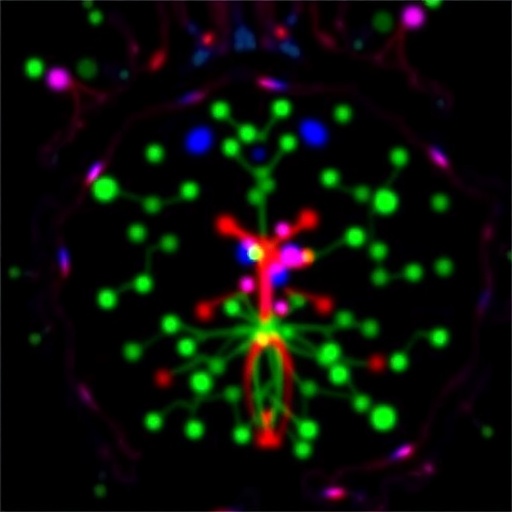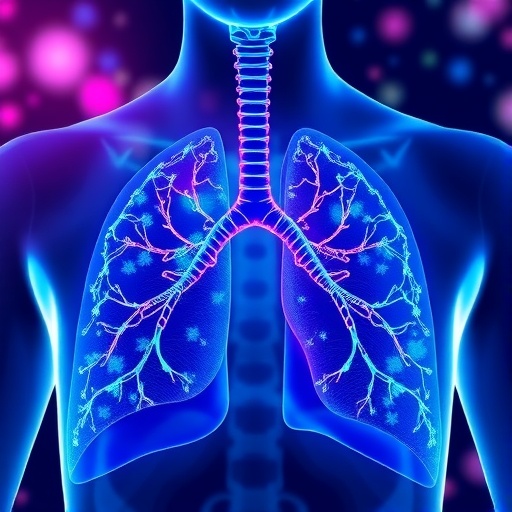In the realm of neurodegenerative diseases, the understanding of Lewy body diseases and other alpha-synucleinopathies has rapidly evolved, with significant focus placed on the identification of biomarkers in biofluids. The research conducted by Russotto, Longobardi, Ciullini, and colleagues delves into this intricate web of disease pathology, presenting both current findings and a roadmap for future explorations. Their insights pave the way for potential breakthroughs in early diagnosis and therapeutic interventions, which are crucial in managing these debilitating conditions.
Alpha-synucleinopathies, encompassing disorders such as Parkinson’s disease, dementia with Lewy bodies, and multiple system atrophy, are marked by the accumulation of misfolded alpha-synuclein protein. This aggregation leads to neuronal dysfunction and consequent clinical manifestations ranging from motor impairments to cognitive decline. The urgency for effective diagnostic tools stems from the similarities these diseases share, making it difficult to differentiate between them based solely on clinical examination.
Recent studies have highlighted the potential of biofluids—particularly cerebrospinal fluid, blood, and saliva—as sources of biomarkers that could assist in distinguishing between these neurodegenerative diseases. The examination of specific proteins, including alpha-synuclein and other neurogranin, tau, and beta-amyloid, has shown promise in reflecting the underlying pathophysiology of these conditions. By analyzing changes in the concentration of these biomarkers in biofluids, researchers aim to develop non-invasive tests that could improve diagnosis accuracy and timeliness.
Central to the researchers’ findings is the necessity for a multifaceted approach to biomarker discovery. This entails integrating various omics technologies—proteomics, metabolomics, and genomics—to capture a comprehensive picture of the neurodegenerative landscape. The combination of high-throughput screening techniques with advanced machine learning algorithms holds the potential to identify novel biomarkers and refine the pre-existing ones, offering new hope in the realm of personalized medicine.
Furthermore, the review emphasizes the need for standardization in biomarker assays, highlighting that variation in methodologies can lead to inconsistent results across studies. Establishing universally accepted protocols for the collection and analysis of biofluids is pivotal in fostering comparability and reliability in research findings. Collaborative efforts among research institutions will be integral to overcome these challenges, ensuring that biomarkers not only reach clinical applicability but do so with a strong scientific backing.
Despite considerable advancements, the road ahead is not without obstacles. One major hurdle remains the ethical implications surrounding the use of biofluids, particularly when it comes to sampling from vulnerable populations. Researchers must also confront the challenges posed by biological variability; factors such as age, gender, and comorbid conditions can all influence biomarker levels. Hence, creating large-scale, longitudinal studies that consider these variables will be key in validating the utility of proposed biomarkers.
The therapeutic implications of accurately identifying these biomarkers are profound. With clearer insights into disease progression and prognosis, healthcare providers could tailor treatment regimens that not only address symptoms but also potentially modify the disease course. Existing therapies, coupled with novel agents targeting specific pathways involved in alpha-synuclein pathologies, could synergize to significantly enhance patient outcomes.
Moreover, the exploration of biomarkers extends beyond diagnostics; they can play a pivotal role in the development of disease-modifying therapies. Understanding the mechanistic underpinnings of neurodegeneration through biomarker analysis could illuminate new therapeutic targets, guiding research efforts toward the creation of innovative treatment modalities. As the scientific community uncovers the intricacies of alpha-synucleinopathies, translational research must remain at the forefront, ensuring that discoveries within the lab swiftly transition to tangible interventions for patients.
Additionally, the potential for integrating biomarker discovery with digital health technologies presents a frontier rich with possibilities. Wearable devices that monitor motor and non-motor symptoms in real time could complement biomarker analyses, allowing for a nuanced understanding of disease fluctuations. Such innovations may eventually change the landscape of disease management, empowering patients with tools to actively engage in their care.
As the dialogue around biomarkers for Lewy body diseases and alpha-synucleinopathies gains momentum, it encapsulates a spirit of optimism. Research efforts focusing on biofluids may soon yield insights that redefine diagnostic paradigms, enhance prognostic accuracy, and usher in an era of personalized medicine tailored to the specific needs of each patient. The collaborative spirit among researchers, clinicians, and patients will be crucial in propelling this field forward, enabling a future where neurodegenerative diseases can be managed more effectively and with greater hope for those affected.
In sum, the work of Russotto et al. serves as a clarion call for the scientific community. The emphasis on identifying and validating biomarkers through biofluid analysis not only signifies progress in understanding alpha-synucleinopathies but also holds the potential to revolutionize early diagnosis and treatment strategies. As the field moves forward, fostering collaboration and innovation will be paramount in overcoming existing barriers, ultimately translating scientific discoveries into meaningful advancements for patients battling these neurodegenerative disorders.
Subject of Research: Biomarkers for Lewy body diseases and other alpha-synucleinopathies in biofluids.
Article Title: Biomarkers for Lewy body diseases and other alpha-synucleinopathies in biofluids: current evidence and future directions.
Article References: Russotto, A., Longobardi, A., Ciullini, A. et al. Biomarkers for Lewy body diseases and other alpha-synucleinopathies in biofluids: current evidence and future directions. J Transl Med (2025). https://doi.org/10.1186/s12967-025-07471-6
Image Credits: AI Generated
DOI: 10.1186/s12967-025-07471-6
Keywords: Biomarkers, Lewy body diseases, alpha-synucleinopathies, biofluids, neurodegeneration, diagnostics, personalized medicine, neurobiology.
Tags: biofluids in disease differentiationbiomarkers for alpha-synucleinopathiesCerebrospinal fluid biomarkersdementia with Lewy bodiesearly diagnosis of neurodegenerative diseasesLewy body disease researchmultiple system atrophy insightsneurodegenerative disease diagnosisneurogranin and tau protein studiesParkinson’s disease biomarkersprotein aggregation in neurodegenerationtherapeutic interventions for alpha-synucleinopathies





